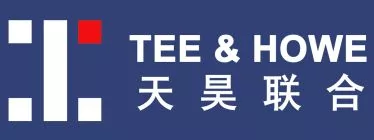This is available at the link below:
https://mp.weixin.qq.com/s/zQ0cveA644j03rfrMdTPxg
There are six cases that are IP related as below (AM means anti-monopoly case, while AU means anti-unfair competition case):
- The case involving Desloratadine Citrate Disodium (AM, domestic parties on both sides)
- The case involving Batroxobin (AM, domestic parties on both sides)
- The case involving passing-off of the Siemens mark (AU, foreign plaintiff and domestic defendant)
- The trade secret case involving light initiated chemiluminescence assay system general purpose fluid (AU, domestic parties on both sides)
- The case involving an app for grabbing and then distributing data from TikTok (the Chinese version, AU, domestic parties on both sides)
- The case involving an app for bot-type leveling up in Tencent online games (AU, domestic parties on both sides)
There is one AM case that involved General Motor, but this case is not IP-related.
I am trying to obtain the original decisions to study further. If you have the original decisions, I will be grateful for your sharing.
Below are my observations on each of the above cases based on the Supreme People's Court announcement (this is why I want to see the original decisions).
1) The case involving Desloratadine Citrate Disodium
This is interesting as the decision was reversed at the Supreme People's Court dismissing the first instance decision. The first decision decided that the defendants conducted abusive acts using its market dominating position including restricting transactions, unfair high prices, and imposing unreasonable trading conditions. The Supreme People's Court reversed this first instance decision based on the following:
- Desloratadine Citrate Disodium fell within the scope of patent protection of the defendant (need to check the original decision on what patent is involved, what is the scope, and what are the plaintiff's acts involved), and the Supreme People's Court considered that the conditions imposed by the defendants did not exceed the patent protection scope conferred by the patent law.
- There was no sufficient evidence showing that the price set by the defendants was unreasonably high after considering the fluctuation in prices of the raw materials.
- There was no sufficient evidence showing that there was tie-up sales with the subject Desloratadine Citrate Disodium.
2) The case involving Batroxobin
Not much was argued for this case, as the defendant was determined by the SAMR that the defendant was wrong by refusing to trade with the plaintiff while occupying 100% of the market, and therefore had conducted monopolistic acts. The defendant only argued for jurisdiction in this case, which failed.
3) The case involving passing-off of the Siemens mark
While there is not much to talk about the merit of the case itself (the word "Siemens" was used by the defendants, and the court admitted that "Siemens" has a relatively high level of fame in China), the eye-catching part is the damages awarded to Siemens. Specifically, Siemens was awarded the full amount they asked for, which was 100M RMB (about 13.75 million USD), plus legal expenses 163,000 RMB (about USD22400, I know it is peanuts in the US scale, but already significant in China).
4) The trade secret case involving light initiated chemiluminescence assay system general purpose fluid
This is a typical trade secret case – employee left, went to another company with trade secrets with original employer. The interesting point of this case, in my view, is summarization of existing technologies was considered by the court as trade secret that worths protection.
5) The case involving an app for grabbing and then distributing data from TikTok
The data grabbed from TikTok did not only include the video, but also included user information and other users' comments (I would not be surprised that this was a crude and simple port by replacing TikTok's logo with the app's own logo). Interestingly, the court determined that the videos, user information, and comments constituted combinations of data collection of TikTok, while having commercial values, such combinations were not specified to be protected by the copyright law, but therefore the anti-unfair competition law came into play.
6) The case involving an app for bot-type leveling up in Tencent online games
First, some explanation. When playing online games, it is not unusual that some people use some bot-type tools to level up in the game without actually spending time playing the game. Further, in China all online games have to implement anti-addiction mechanisms for underage (sorry no effect on me, I haven been addicted to video games for a long time), and this app got around this mechanism for those who were underage. It is interesting that the court decided in this case that such act disrupted online game operations, which resulted in unfair competition, let alone getting around the anti-addiction mechanisms. Personally, I support this, as I prefer not to play the game if one has no time.
For the non-IP case involving GM, this case was started by an individual consumer buying GM car at a price set by GM that GM prohibited GM's dealer to go under. GM and its dealer were already fined by the Shanghai administration. The first decision ruled against the consumer based on lack of proof from the consumer that the prohibited price was executed, but this decision was reversed at the Supreme People's Court as GM and its dealer had already been fined, and the consumer did but the car at the price at issue.
Some lesson to learn, in my view:
- China is on full swing against monopoly and unfair competition, even for individual consumer. Price-setting is a no-go.
- However, do not be shy to utilize your patents in China to prevent others from practicing your invention, provided that you do not stretch too far to, for example, tying-up.
- Play nice. Before a transaction is turned down, think twice.
- Passing-off a famous mark could result in huge trouble in China, which may be in the order of 100 million RMB.
- Summarization of existing technologies could receive trade secret protection in China.
- The next revision of the China copyright law may wish to consider including protection for combinations of data on social media platforms.
- Play online games only if you have the time to actually play it.
- Data protection exists in China. Use it.
The content of this article is intended to provide a general guide to the subject matter. Specialist advice should be sought about your specific circumstances.

